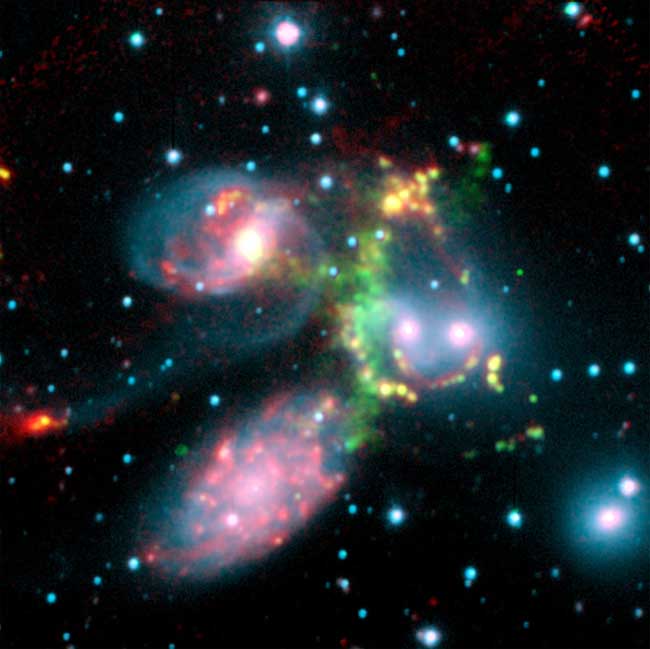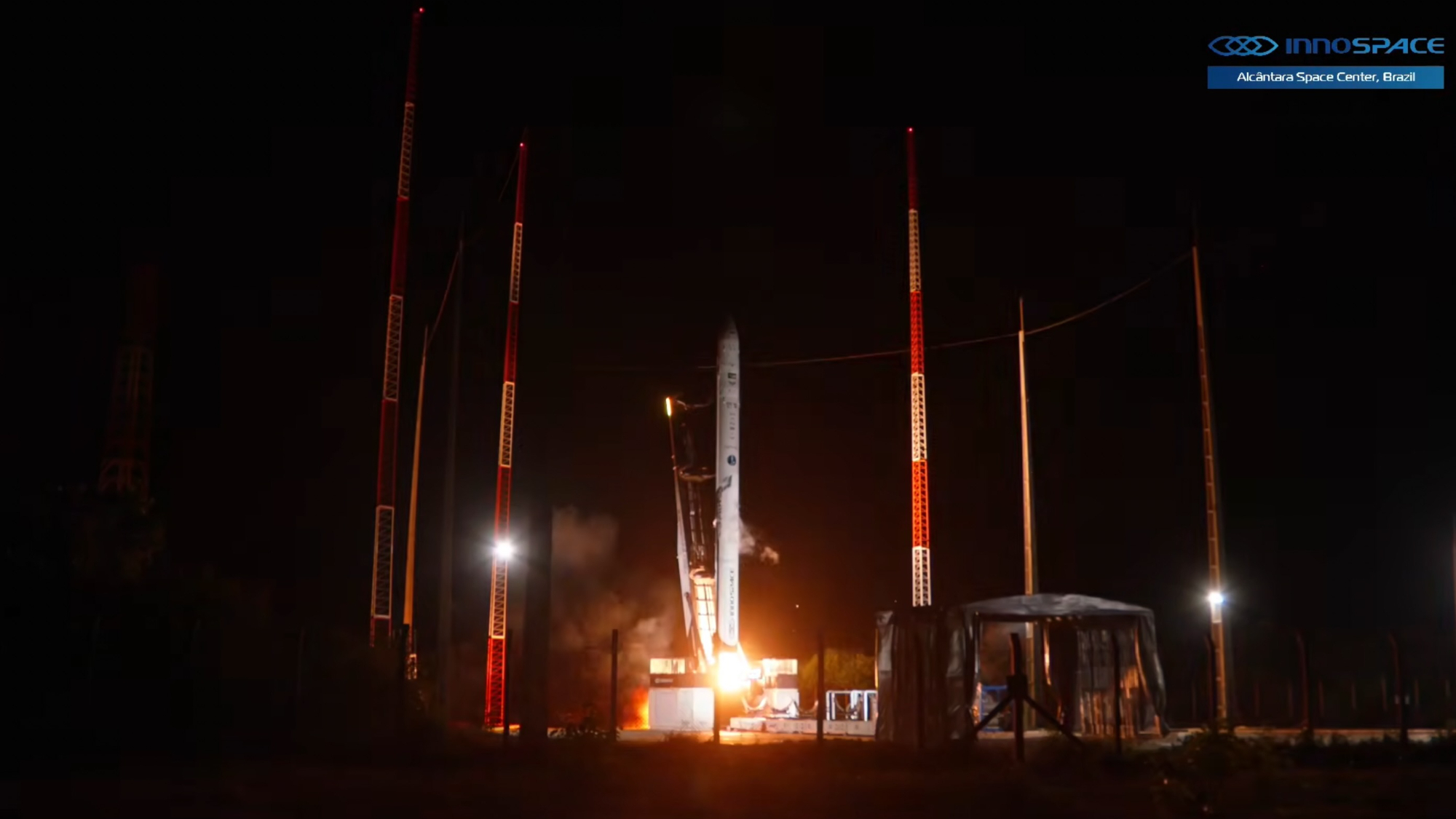
A galaxy in Stephan's Quintet is rushing headlong into a cluster of neighboring galaxies at more than one million mph and generating one of the largest shock waves scientists have ever seen.
The finding, made using NASA's Spitzer Space Telescope, gives astronomers a chance to see a galactic collision in action and could help explain why some galaxies are more luminous in the infrared than others.
A cosmic pileup
Stephen's Quintet is a cluster of five galaxies located about 300 million light-years away in the constellation Pegasus. For decades, astronomers using optical telescopes have known that galaxies in the cluster had experienced encounters in the past and that some were colliding even now.
But it wasn't until they used Spitzer's Infrared Spectrograph on the galaxy cluster that they could make out the details of what was happening.
They discovered that one of the galaxies, called NGC 7318b, is currently falling toward three of the others at a very high speed and generating a giant shock wave, or "bow shock," in front of it. A bow shock is akin to the ripple raised by a boat's bow as it moves through the water.
NGC 7318b is estimated to be moving at more than 540 miles per second (873 kms) and generating a colossal shockwave larger than our own Milky Way Galaxy.
Breaking space news, the latest updates on rocket launches, skywatching events and more!
Faster than sound
Shock waves are generated when an object moves faster than the speed of sound through some kind of medium. On Earth, the medium is usually air or water; in space, it's interstellar gas.
One familiar type of shock wave is the "sonic boom" created by supersonic jets as they fly by overhead. As the jet moves through the air, it creates pressure waves in front and behind it. These waves travel at the speed of sound, called Mach 1. As the jet approaches this speed, it compresses the waves together into a cone-shaped "shock" which travels outward toward the ground, producing an audible boom.
In Stephan's Quintet, the shock wave generated by the infall of NGC 7318b is estimated to be moving at speeds greater than Mach 100.
Time machine
The researchers discovered the shockwave after detecting infrared radiation emitted from molecular hydrogen in the region that had been disturbed. Unlike atomic hydrogen, molecular hydrogen emits infrared energy when jostled.
The finding could lead to a better understanding of so-called Ultra-luminous Infrared Galaxies, which typically have infrared luminosities 100 to 1,000 times greater than the Milky Way.
"We know that these galaxies are involved in vast mergers and collisions," said study leader Philip Appleton of the California Institute of Technology. "It's possible that some of the emission we see from them is created not by stars, but by vast shocks in the gas between colliding galaxies."
The finding also gives scientists a glimpse into what the universe was like in the first few billion years after the Big Bang. It's thought that many galaxies, including our own, grew as a result of galactic mergers and that these events were more common during the early years of the universe.
"In this respect these observations are a bit like stepping into a time machine," said study team member Cristina Popescu from the Max Planck Institute for Nuclear Physics in Germany.
In addition to acting like a window into the far distant past, the collision in Stephen's Quintet could give scientists a preview of our own galaxy's fate in the far distant future.
Scientists predict that in about 2 or 3 billion years, the Milky Way will collide with the slightly larger Andromeda Galaxy. It's expected that both galaxies will lose their spiral shape and merge to become a single elliptical galaxy.
The finding is detailed in the March 10 issue of Astrophysical Journal Letters.
- Crash Course: Simulating the Fate of Our Milky Way
- Hubble Spies Galactic Collision
- Shushing Sonic Booms: Changing the Shape of Supersonic Planes
- Cosmic Fossils Show Milky Way Is a Galaxy Gobbler
Ker Than is a science writer and children's book author who joined Space.com as a Staff Writer from 2005 to 2007. Ker covered astronomy and human spaceflight while at Space.com, including space shuttle launches, and has authored three science books for kids about earthquakes, stars and black holes. Ker's work has also appeared in National Geographic, Nature News, New Scientist and Sky & Telescope, among others. He earned a bachelor's degree in biology from UC Irvine and a master's degree in science journalism from New York University. Ker is currently the Director of Science Communications at Stanford University.
